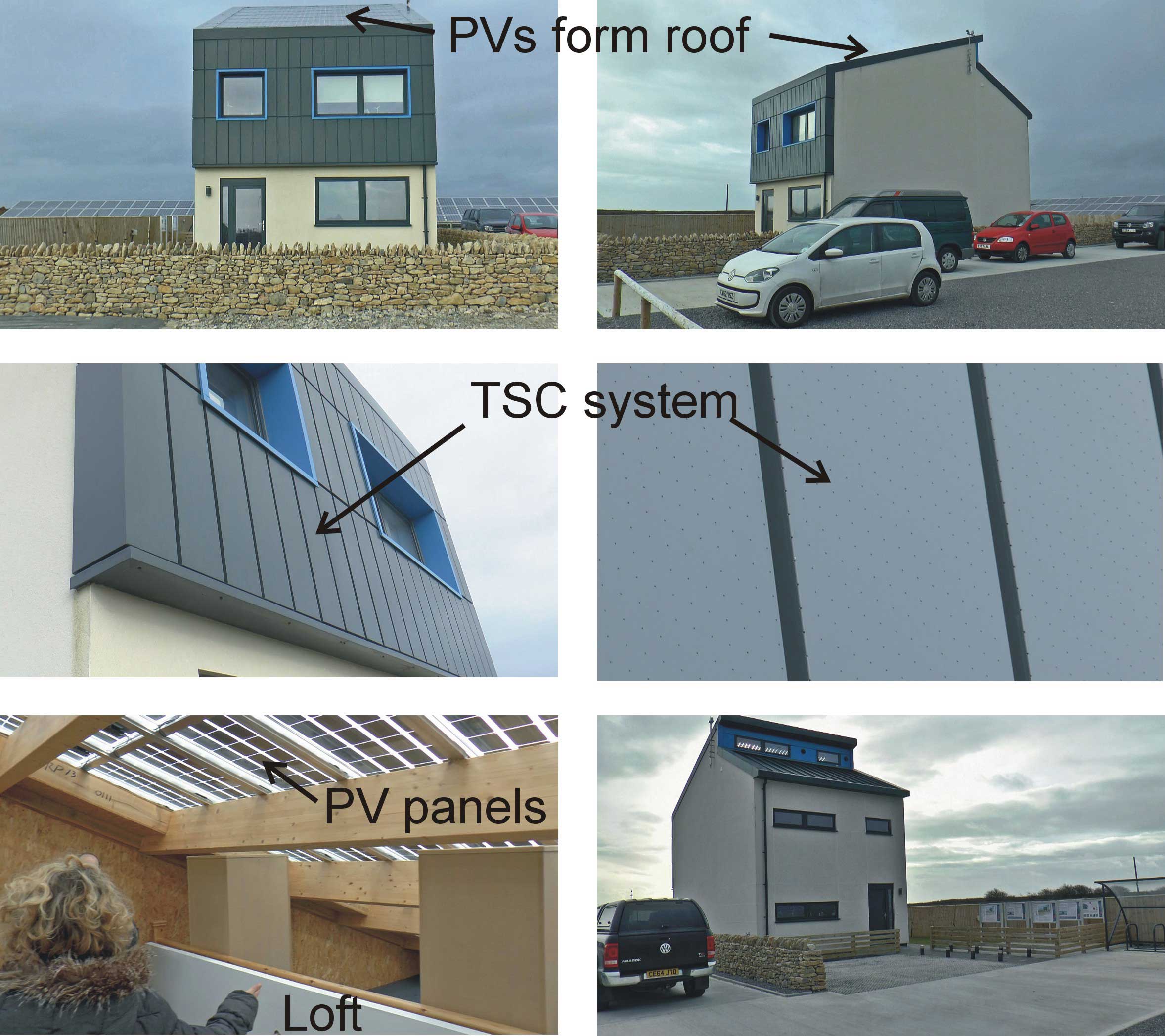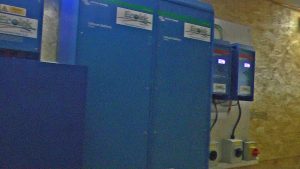
The Solcer house has been designed by The Welsh School of Architecture at Cardiff University. It combines renewable energy supply, thermal and electrical energy storage, heat recovery high levels of insulation and a frameless timber construction in an effort to produce an energy positive house at a price that would bring it into the range of “affordable housing”.
We visited the house in January 2016 and were shown round by the Project Manager, Dr. Jo Patterson.
Although not furnished as a house (it is set out for educational visits and also used as offices) it was not hard to imagine the interior as a pleasant, airy, modern house well suited to a small family.
The exterior is quite austere with its small north-facing windows and plain sides (it is designed so that it could be part of a terrace) but the materials used have an air of quality about them and the slate-grey metalwork and blue accents seem to blend in with the Welsh landscape.
The energy inputs to the system come from the transpired solar air collector TSC on the upper south face and the photo-voltaic panels PVs on the roof.

In winter, fresh air passes through the holes in the TSC where it receives solar heating. It passes through a heat recovery system where it takes up heat from the spent air on its way out of the building. Remaining heat in this exhaust air is extracted by a heat pump and stored in a thermal water store (which in turn, is used to heat up the domestic hot water). The heat pump powered by the PVs and backup battery. Domestic electricity is supplied from the batteries via an inverter (I assume). If the Pvs fail to maintain the charge on the batteries then grid electricity is switched in.
The PVs have a peak capacity of 4.3kW and the batteries are lithium-ion with a capacity of 7kWhr (I think).

The building is built out of structural insulated panels (SIPS). These are two 12mm sheets of oriented strand board (OSB) with about 170mm of expanded polystyrene sandwiched between. The panels are wrapped in a breathable membrane and then finished with an insulated render system (by Parex). The exact make up of the various layers was not entirely clear to me.
The glazing is double rather than triple, I assume to keep costs down.
The aim is to prove that an energy positive house can be built for £1000 per square metre. However, apparently Barrett can build cheap houses for £500 per square metre which they have no trouble selling (presumably for quite a bit more than £500 per square metre).
So until the Government imposes a requirement for zero carbon new builds (they have recently scrapped the requirements set out for carbon-neutral homes by 2016 set out in 2007 by Gordon Brown – see here), there would seem to be little incentive for homes like these to become mainstream, unfortunately.
YouTube videos follow:
